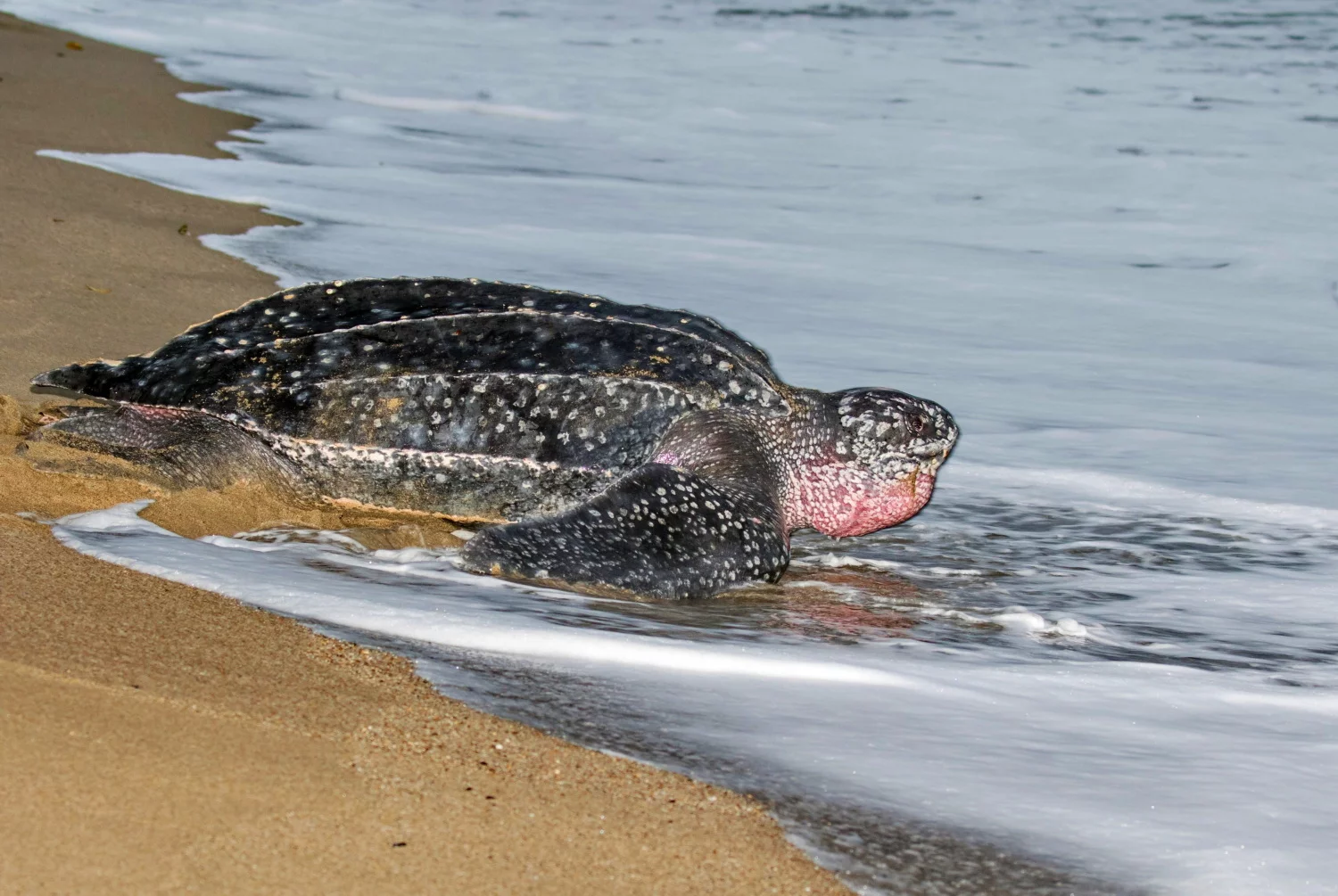Habitat Directive:: Annex IV. MED Conservation Status: Unknown (2013-2018).
IUCN Red List::“Vulnerable” (VU) at global level, with declining trends. In the Mediterranean, the species assessment is “Not Applicable” (NA), since the species is occasional and does not breed there.
Sighting possibilities
Since it has been monitored, a total of a few hundred sightings have been recorded throughout the Mediterranean. They are Atlantic individuals that, during their trans-Atlantic migrations, enter the Mediterranean through the Strait of Gibraltar and remain mainly in the western part of the basin. It is a pelagic turtle that prefers open sea environments, approaching the coast only for nesting or feeding reasons. It does not nest in Italy.
How to recognise it at sea
Dimensioni: Size: adults can reach carapace length of 200 centimetres and weight of 400 kilograms. It is the largest alive turtle, the only one without a horny shell. The carapace has 7 longitudinal ridges and is made up of small bony plates arranged in a mosaic pattern, covered with a very thick layer of leather-like skin. It is bluish-black in colour with small pale spots. The plastron is furrowed by 5 fairings. Even the beak, lacking the thick horny covering, is different from that of other sea turtles and is equipped with cusps, W-shaped at the top, useful for feeding on gelatinous organisms.
Biological notes
It feeds mainly on large jellyfish and occasionally on fish, crustaceans and echinoderms. It is an incredible swimmer, able to dive to depths of over 1,200 metres, where only a few other lunged marine animals such as sperm whales, elephant seals and ziphius can reach.
Curiosities
- It is the largest tortoise in the world. The largest specimen found so far had a carapace curve of 256.5 cm and weighed 916 kg.
- It is so fond of jellyfish that its flesh is toxic.





